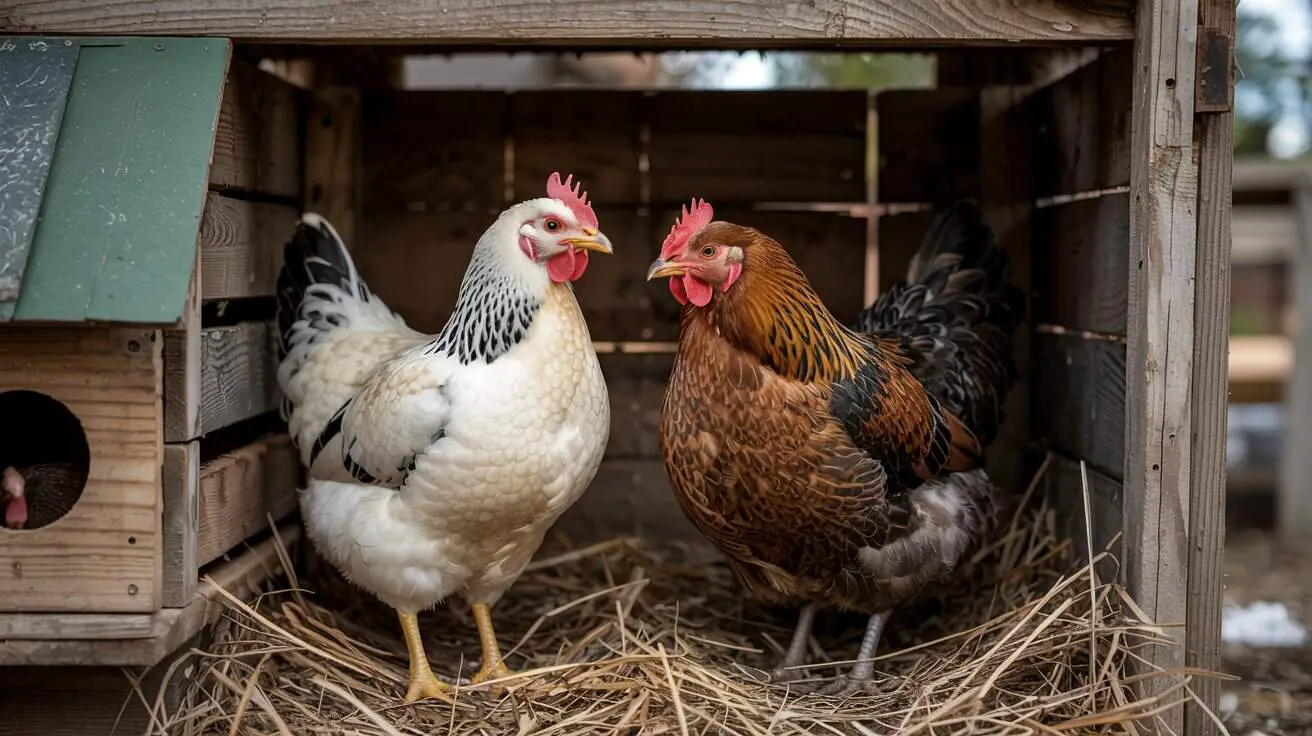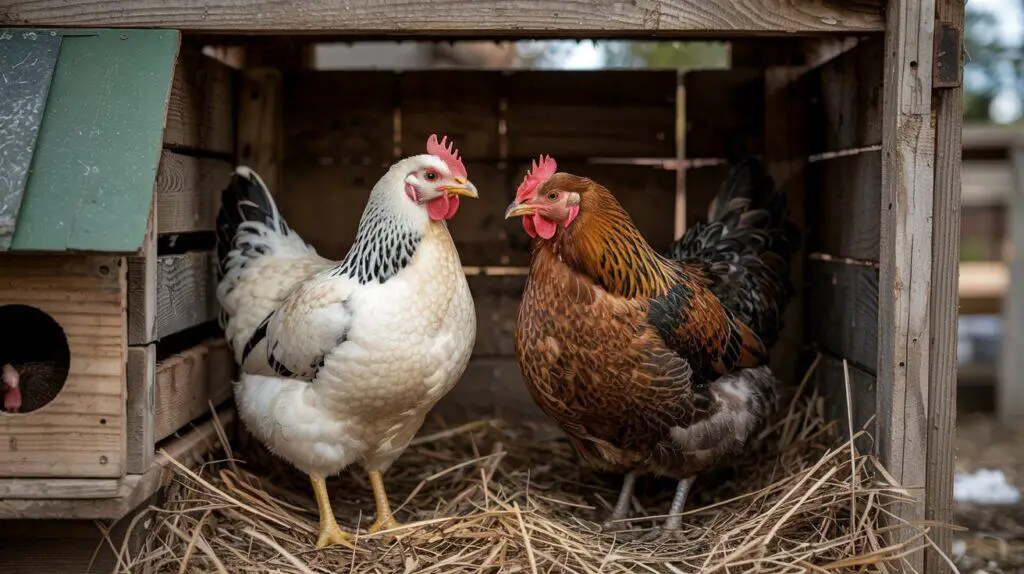
Winter nesting boxes need a little more than just a cozy spot to lay—especially when the weather dips, drafts sneak in, and egg-laying slows down. If you’re a backyard chicken keeper like me, you’ve probably found yourself scrambling to keep things warm and dry as the cold rolls in.
The good news? With just a few tweaks—or even a clever DIY—you can turn your regular chicken coop nesting boxes into comfy winter-ready egg stations. Think insulation, privacy, and yes… extra straw. Whether you’re dealing with hens who get picky when it’s cold, or you just want to reduce cracked eggs and frozen toes, here are six (plus a bonus!) realistic and easy nesting box ideas for your winter chicken setup.
Add Curtains for Privacy and Warmth
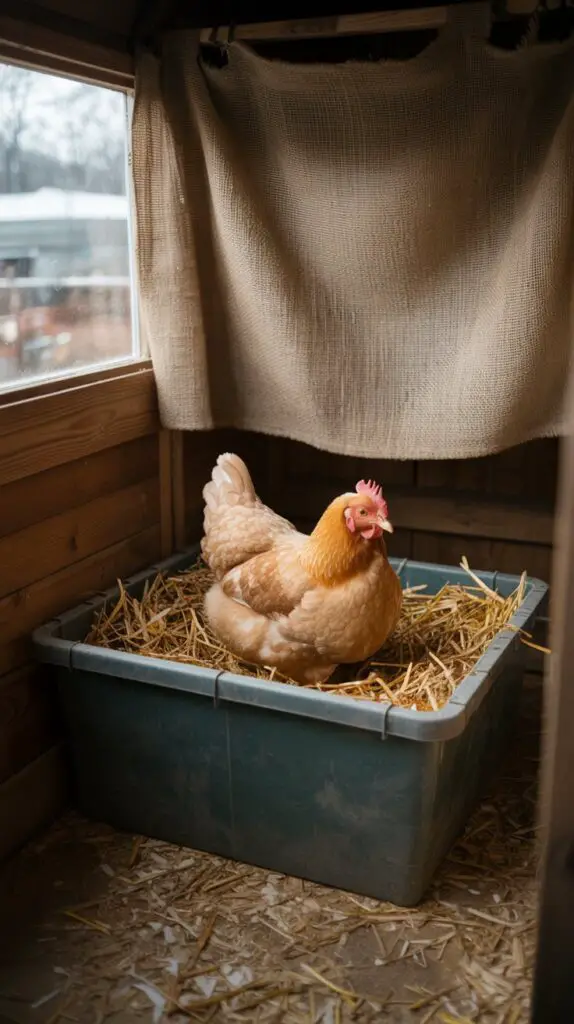
A surprisingly simple way to keep nesting boxes warmer is to add fabric curtains. Use old flannel shirts, feed sacks, or heavy cotton—you don’t need anything fancy. Attach the curtain to the top of the nesting box opening with nails, hooks, or staples so it hangs like a soft flap. It gives hens a private place to lay, cuts down on drafts, and keeps the interior a few degrees warmer. Bonus: hens love the feeling of a hidden nook, especially in colder months.
Choose darker, heavier fabrics for best insulation. Make sure it’s still easy to peek inside for egg collection, and wash them regularly if they get soiled.
Use Deep Straw or Pine Shavings for Insulation
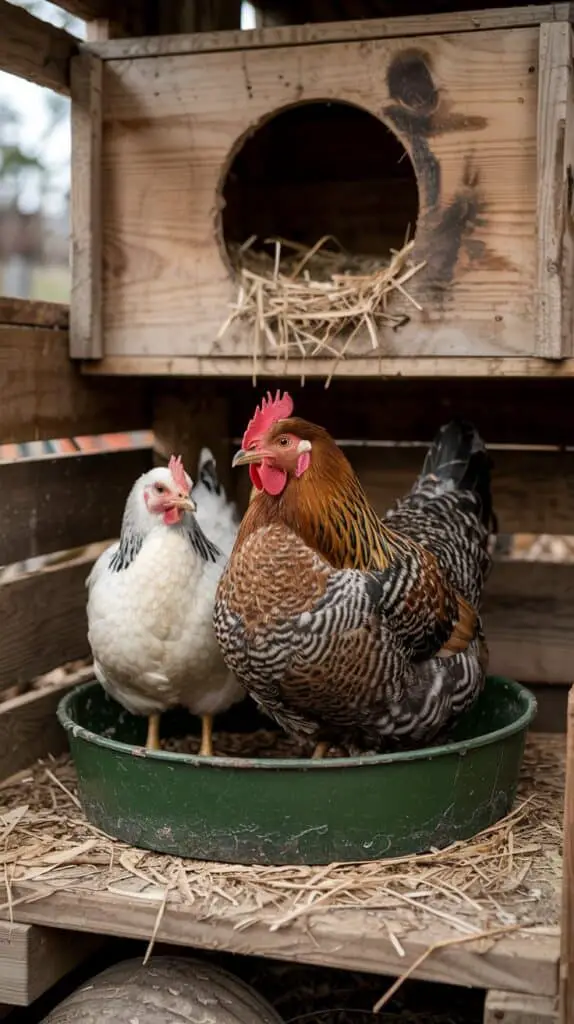
Layering your nesting boxes with deep, dry bedding is one of the most effective (and budget-friendly) winter upgrades. Pine shavings are a great base, but you can go even cozier with chopped straw or hay.
Aim for at least 3–4 inches of bedding inside each box and fluff it often to keep it dry. This helps insulate not only the eggs but also the hens as they sit to lay. Avoid using sawdust or materials that can become compacted or moldy. And don’t be afraid to top off the boxes regularly—it’s like turning their nests into little cloud beds.
Convert Plastic Crates into Cold-Weather Boxes
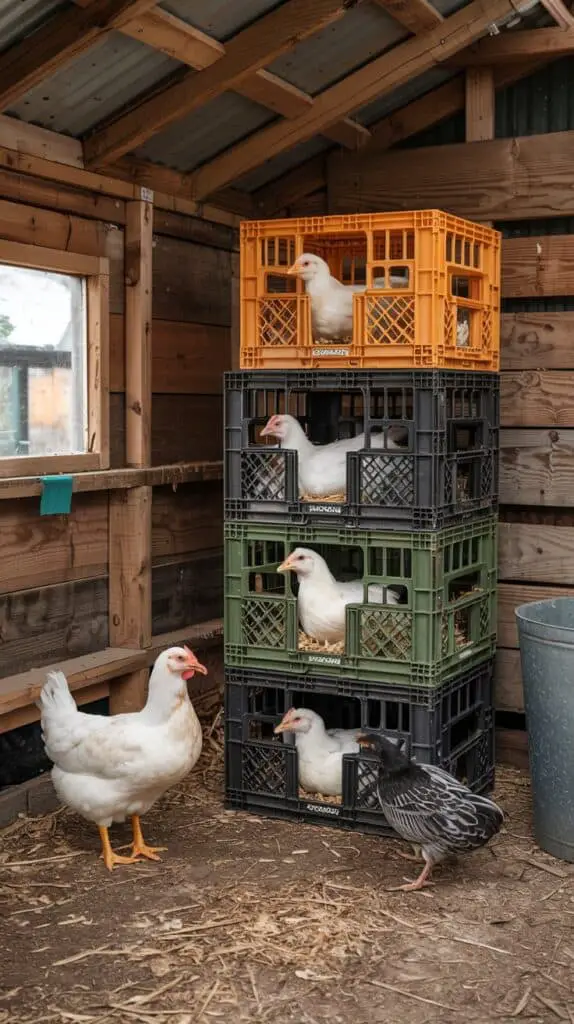
Those stackable plastic milk crates? They’re nesting box gold in winter. Just line them with straw and pop them inside your coop, away from direct drafts. You can add a piece of wood or foam to the top to keep the heat in and use bungee cords to secure them in place.
These boxes are easy to clean, cheap to replace, and work well for both chickens and ducks. They’re especially handy for smaller coops or mobile pens where traditional wooden boxes don’t quite fit.
Build a Nesting Box with a Sloped Roof
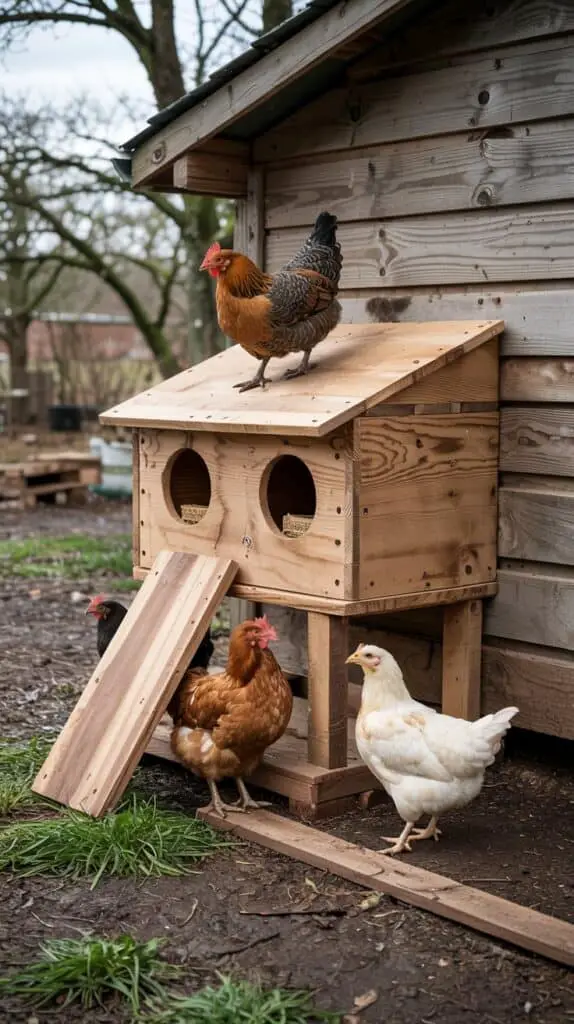
In damp or snowy areas, having nesting boxes with a slanted top is a game-changer. It prevents roosting on top (which means less poop and moisture buildup), and it naturally encourages hens to go inside to lay.
Use plywood or scrap timber to create simple slanted lids over your existing boxes. You can even hinge them if you want to lift them up for egg collection. Sloped roof boxes look neat, stay cleaner, and help redirect drips or snowmelt if placed near coop openings.
Reuse Cat Litter Bins or Storage Totes
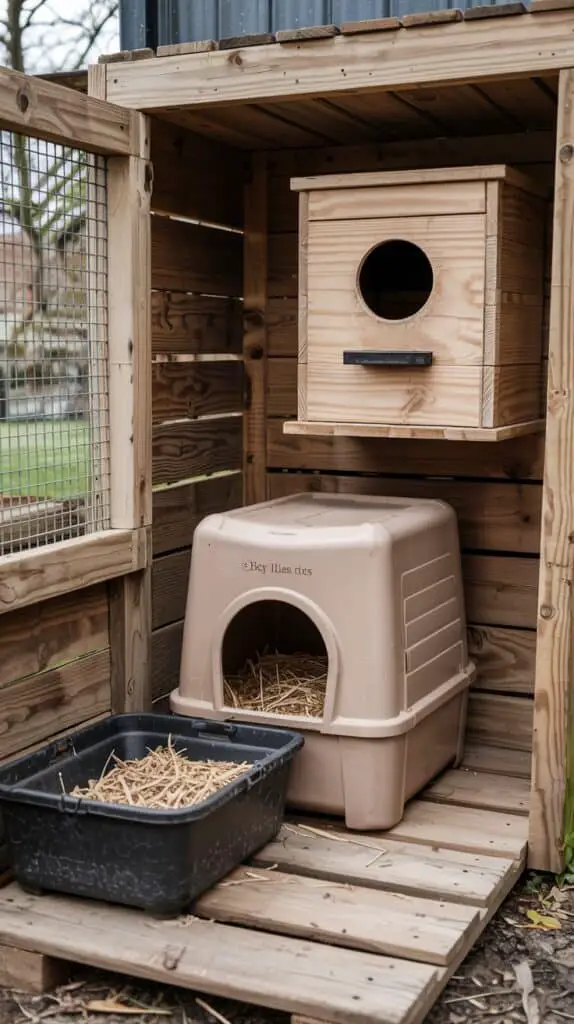
This one’s a bit unglamorous—but trust me, it works. Flip a large plastic storage bin or empty cat litter box on its side, cut a small doorway, and fill it with straw. These create warm, enclosed nesting spaces perfect for winter.
Because they’re plastic, they help retain heat better than wire or exposed wooden boxes. Plus, you can stack them or tuck them under tables or built-in roosting areas. Just make sure there’s airflow to avoid too much moisture buildup.
Tuck Nesting Boxes into Insulated Corners
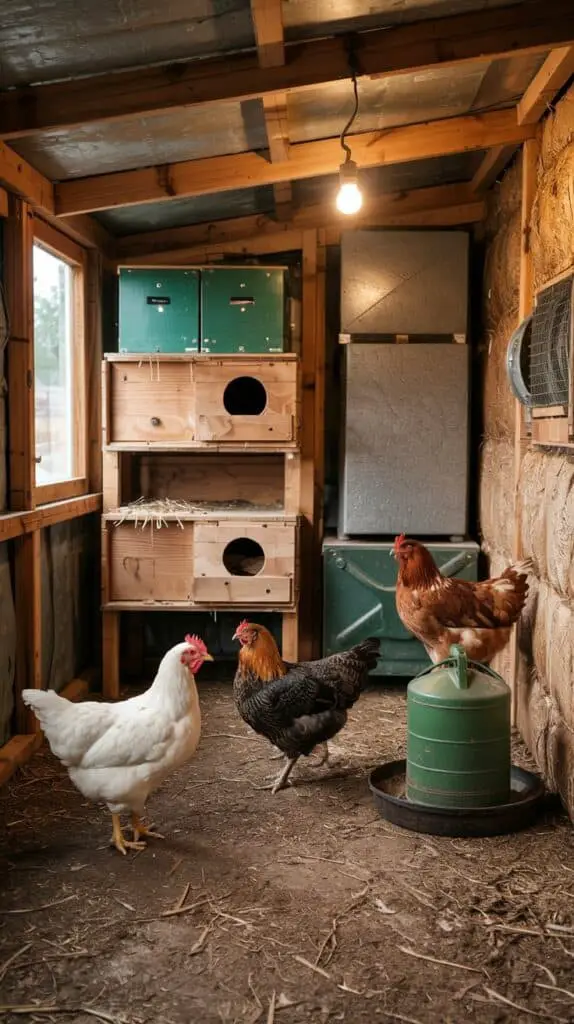
In larger chicken houses or walk-in coops, try positioning your nesting boxes along the warmest wall. This is usually the south-facing side or a wall shared with a heated shed or garage.
Add insulation (styrofoam, straw bales, or even old blankets) around the exterior of the boxes and block any nearby drafts. Keep waterers away from this area to reduce humidity and frost risk.
Chickens will naturally choose the warmer, safer nesting spots, especially during winter months—so give them the comfiest corner possible and let nature do the rest.
Bonus: Nesting Box Heater Pads (Only If You Really Need Them)
For super cold climates or older hens, you might consider low-wattage nesting box heaters. These are usually flat pads placed under the bedding or attached to the rear wall of the box.
Make sure they’re rated for coop use, have safe cords, and can’t be pecked or scratched. Most chickens won’t need these unless your area regularly drops below freezing. Still, it’s an option for those deep winter months if you notice laying slows down or eggs are freezing before you can collect them.
Final Thoughts
Winter nesting doesn’t need to be complicated—just a little warmer, a little softer, and a lot more thoughtful. Chickens are surprisingly good at handling the cold, but a well-prepped nesting box makes a huge difference in keeping them comfortable and laying regularly.
Whether you’re flipping crates, hanging curtains, or just fluffing straw every morning, every little effort counts. And hey—there’s something kind of sweet about seeing your hens snuggled up in their cozy boxes, especially when the world outside is chilly and grey.

